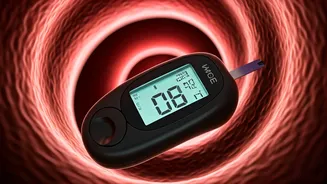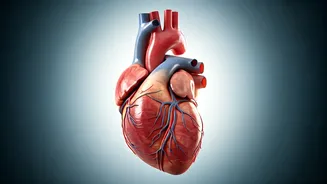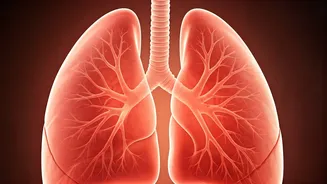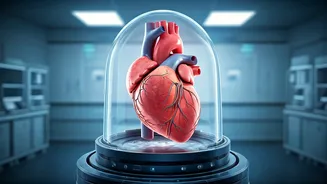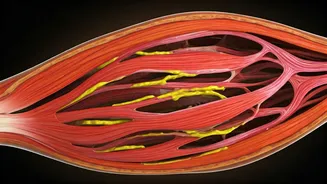Unexplained Fatigue
Feeling consistently tired, even after adequate sleep, can be a sneaky sign of elevated blood sugar. This fatigue differs from everyday tiredness; it persists
and doesn't improve with rest. High blood sugar can interfere with the body's ability to use glucose for energy. Instead of efficiently fueling your cells, excess glucose remains in the bloodstream. This forces the body to work harder to compensate, leading to exhaustion. Consider checking your blood sugar levels, especially if fatigue is coupled with other symptoms. Lifestyle adjustments, like dietary changes and increased physical activity, can significantly help manage this fatigue. Consulting with a healthcare professional can help you develop a personalized plan to combat this fatigue and support better energy levels.
Increased Thirst Always
Excessive thirst, known medically as polydipsia, is a common symptom of high blood sugar that many people might overlook. When blood sugar levels are high, the kidneys work overtime to filter and absorb the excess glucose. Because of this added effort, the kidneys pull water from the body to flush out the sugar. This process can lead to dehydration, triggering a constant feeling of thirst. If you find yourself drinking significantly more fluids than usual, even without intense physical activity or hot weather, it’s worth investigating your blood sugar levels. This symptom, when combined with frequent urination, is a strong indicator of hyperglycemia. Ensure you are well-hydrated, but also consult a doctor to check and control your blood glucose.
Frequent Urination Issues
Frequent urination, especially at night (nocturia), is another symptom linked to high blood sugar levels. As the kidneys try to remove excess glucose from the blood, they also eliminate extra fluid. This can lead to increased urination, day and night. The body attempts to balance the high sugar concentration in the blood by diluting it with water, which is then passed out through urine. If you’re consistently needing to urinate more often than usual, it could be your body's way of signaling elevated blood sugar. It's essential to monitor this alongside other symptoms and seek medical advice. Keeping track of your fluid intake and urination frequency can provide valuable data for your healthcare provider.
Slow Wound Healing
Slow wound healing is a less obvious but significant sign that your blood sugar may be too high. When blood sugar levels are elevated, they can impair the body's natural healing processes. High glucose can damage blood vessels and reduce blood flow to the extremities, slowing the delivery of nutrients and oxygen to wounds. Furthermore, high blood sugar impairs the function of immune cells needed for healing, leading to delayed recovery from cuts, bruises, or infections. If you notice that your wounds are taking longer than usual to heal, particularly if you're not diabetic, it’s advisable to have your blood sugar checked. Lifestyle changes and medical interventions can significantly improve wound healing.
Skin Issues Appear
Changes in skin condition can also indicate problems with blood sugar. High blood sugar can make the skin more prone to dryness, itchiness, and infections. High glucose levels can dry out the skin and make it more susceptible to bacterial and fungal infections. These infections often manifest as recurring skin issues, like boils, fungal infections, or areas of thickened, dark skin (acanthosis nigricans). If you experience persistent skin problems, even if your blood sugar reports seem normal, it's worth checking your blood sugar levels and consulting a doctor. Early detection and management can help prevent severe complications and improve overall skin health.
